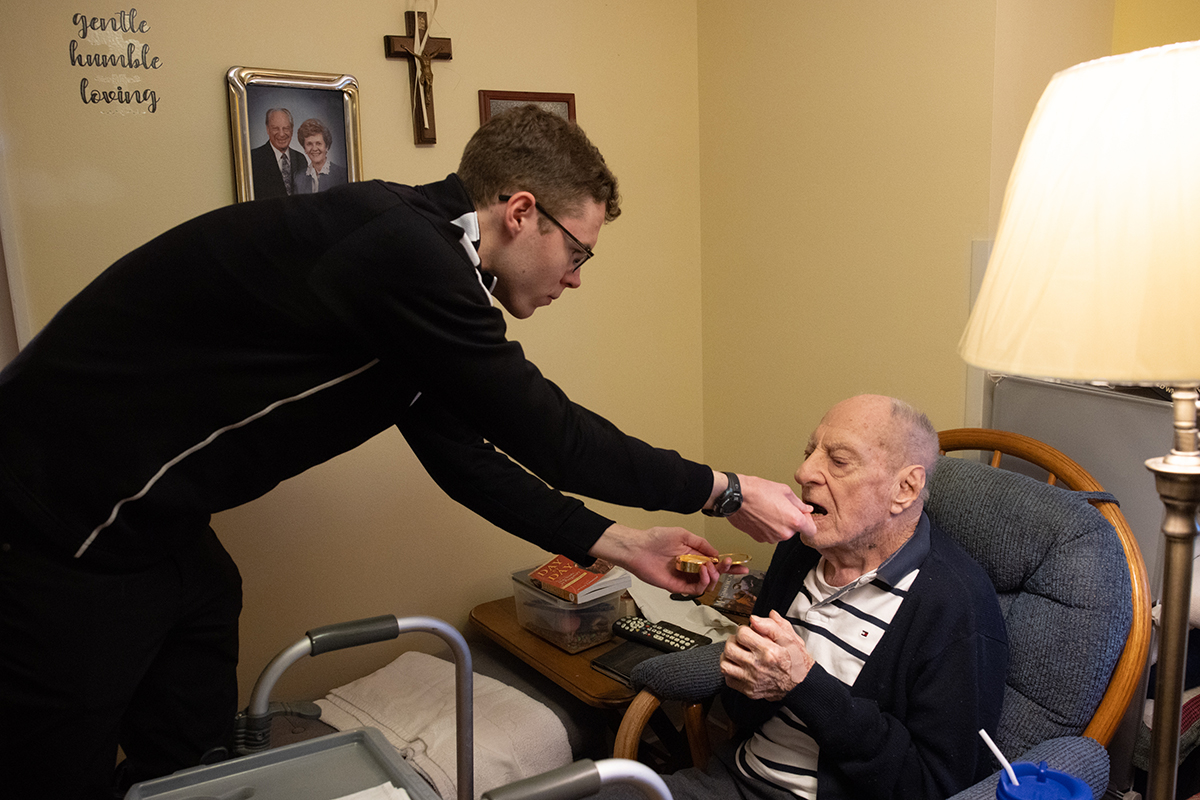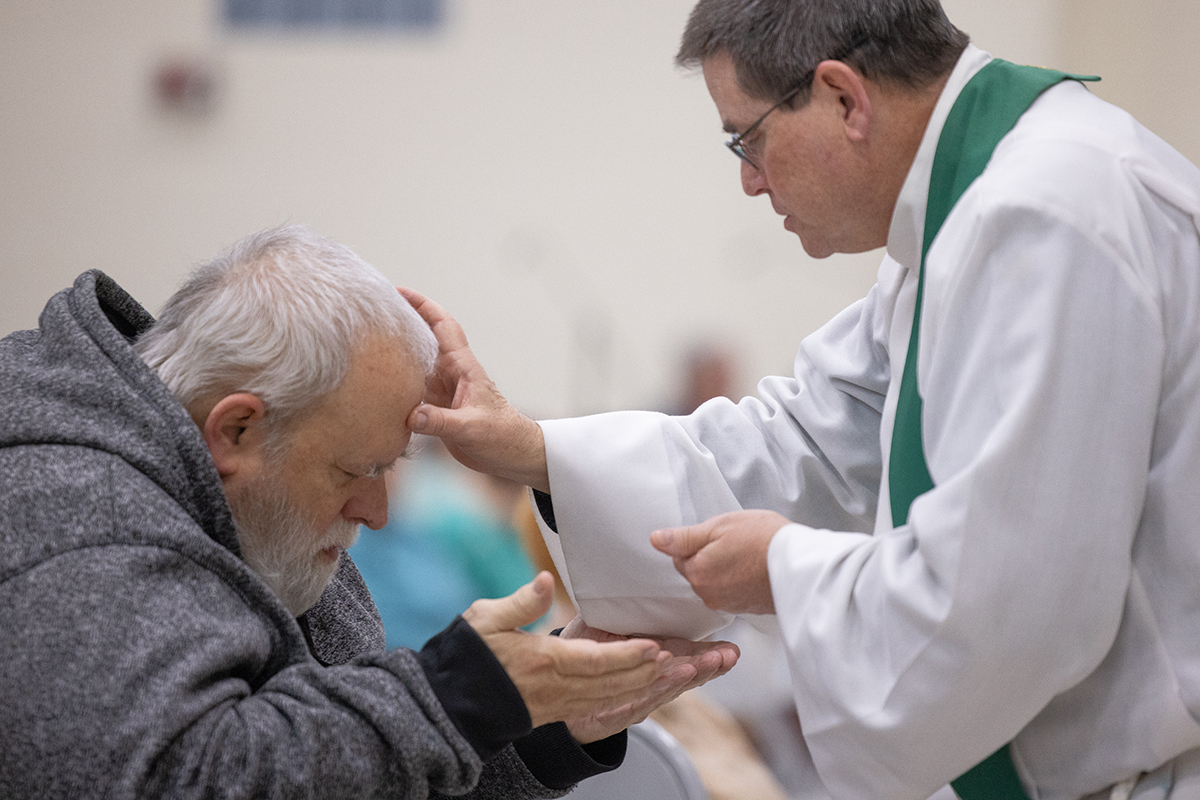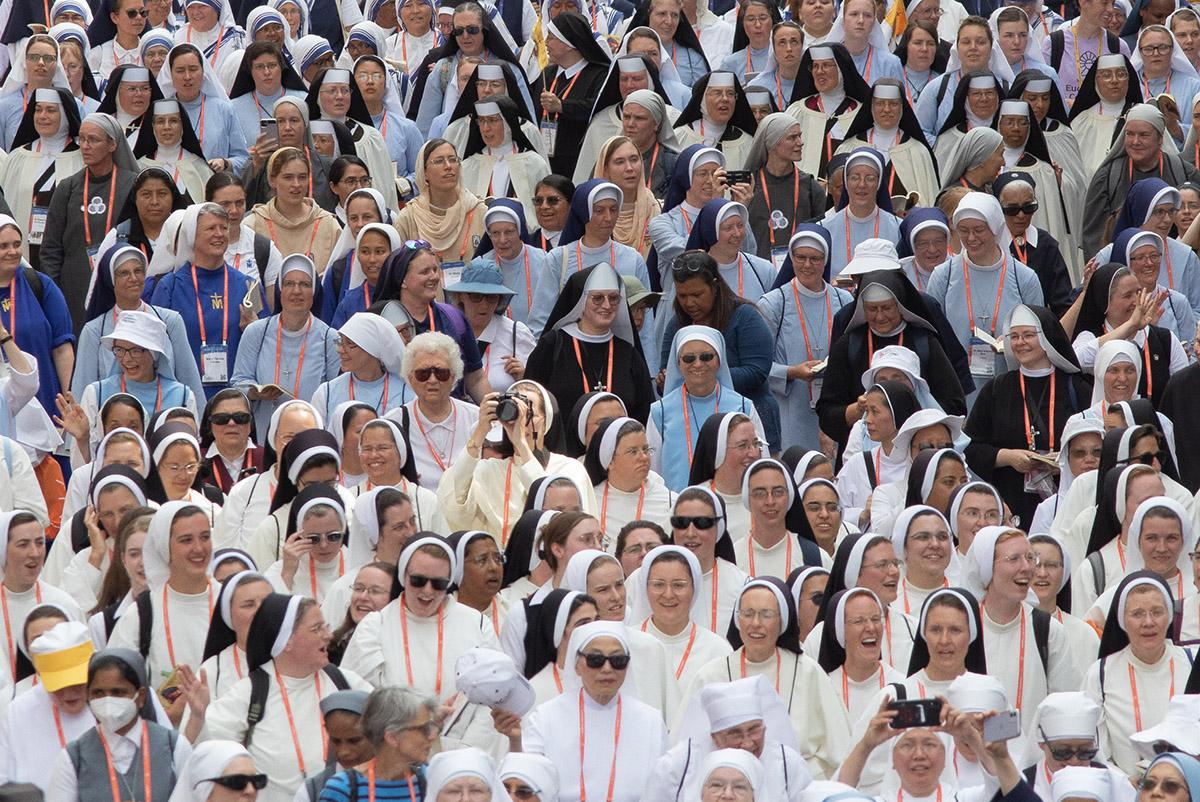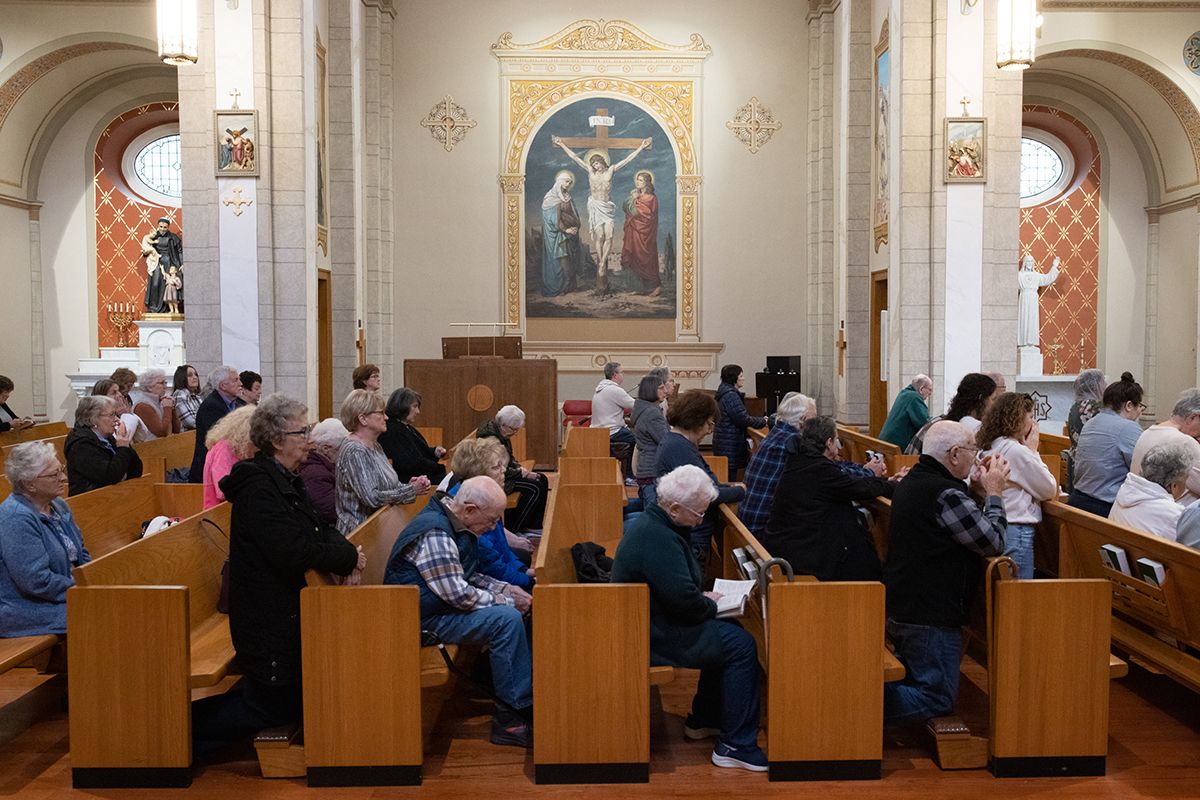Decrees explain changes to parish structures
As part of the restructuring of parishes in the Archdiocese of St. Louis, parishes that have undergone some kind of change received a decree noting the changes.
A decree is a singular administrative act issued by a diocesan bishop. It is required to alter a parish or take other actions as prescribed by canon law.
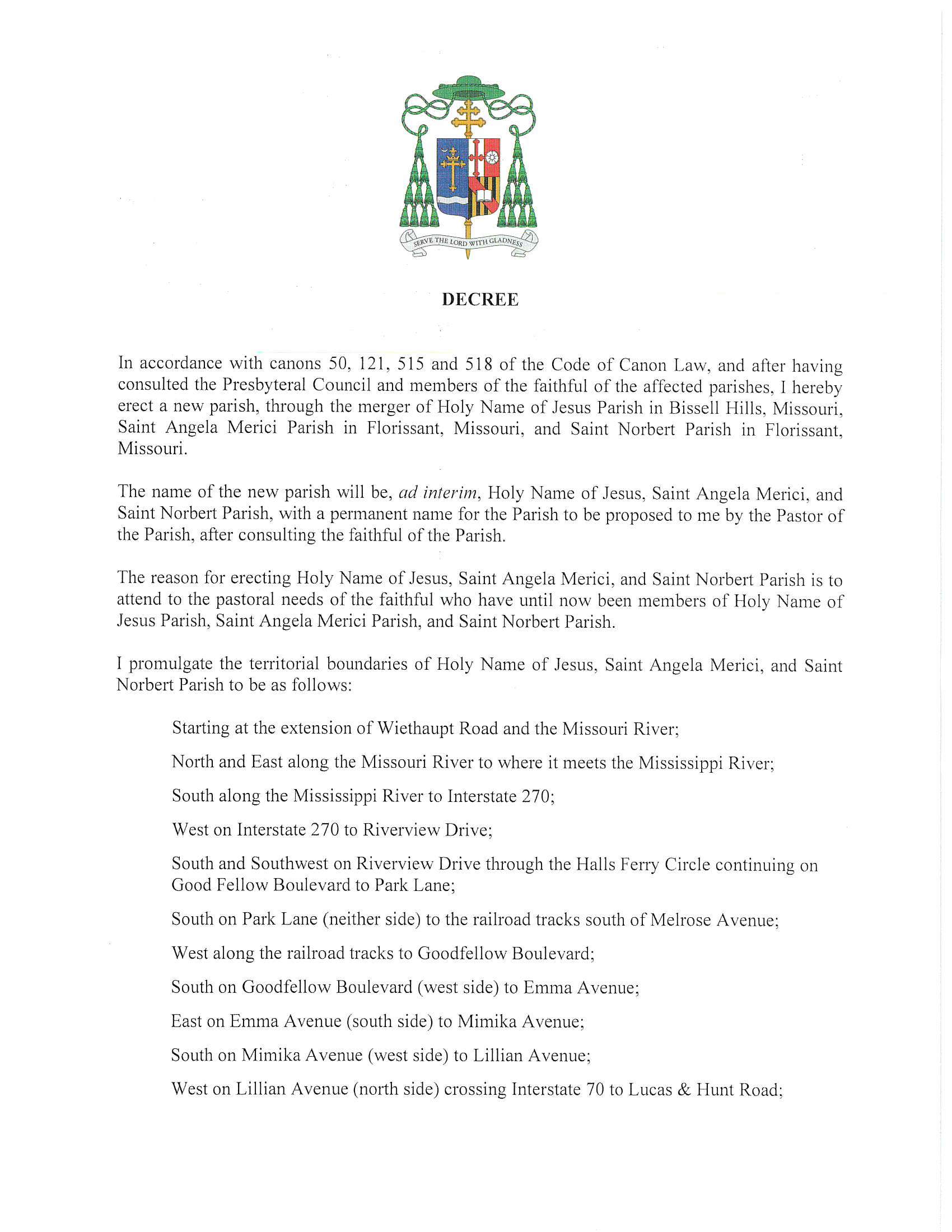
Some parishes will experience one of the following five scenarios as a part of the archdiocese’s restructuring:
- Two or more parishes share the same pastor: In this situation, each parish retains its own unique juridic identity, which is essentially an individual parish under the authority of the diocesan bishop and includes a pastor, the faithful and a finance council.
- One or more parishes are subsumed into another parish: One (or more) parishes are united to another parish in such a way that the first parish no longer exists and the second remains. This type of modification occurs where the parish(es) being subsumed are significantly smaller in numbers of parishioners than the remaining parish. The parish church is the church of the remaining parish; Masses are celebrated at the parish church while the other church(es) remain open to the faithful.
- Two or more parishes are united to form one new parish: This is a merging of two or more parishes into one new parish. The new parish will temporarily be referred to as the combination of the names of the previous parishes; a new name will eventually be proposed to the archbishop by the new pastor after consultation with the members of the new parish. The new pastor, in consultation with the parish finance and pastoral council and the members of the new parish, will determine which church building will primarily be used for worship.
- The suppression of personal parishes: This is the suppression – meaning it will no longer exist – of a parish and usually occurs only in the case of a personal parish, which is a non-territorial parish established for some kind of personal reason (language, for example).
- The establishment of new personal parishes: A new parish is established for a non-territorial reason (i.e. to serve the faithful whose primary language is not English).
Each decree will indicate that the archdiocesan Priests Council and the faithful were consulted, as well as the reasons for and the result of the decision. The decrees, which have been published at allthingsnew.archstl.org, also encourage each pastor to warmly welcome the new members from the parish that has been subsumed or to the newly erected parish.
Changes to the affected parishes will take place on Aug. 1, 2023.
Recourse Process
Any member of a parish who claims to have been aggrieved by a decree regarding a parish has the right to seek the decree’s revocation or emendation. Such a request must be made in writing and postmarked no later than June 12, 2023, to the Most Reverend Archbishop of Saint Louis, Cardinal Rigali Center, 20 Archbishop May Drive, Saint Louis, Missouri 63119 (canon 1734)
To read the decrees for each affected parish, visit allthingsnew.archstl.org.
Glossary of key canon law terms
Amalgamated/subsumed: when one parish is united to another parish in such a way that the first parish no longer exists and the second parish remains
Associate pastor: a parochial vicar, a priest who serves as a co-worker with the pastor and pastorally ministers by common counsel and effort with the pastor and under his authority
Church: a sacred edifice dedicated for divine worship and to which the faithful have right of entry; the following are also terms commonly used to describe churches: basilica, cathedral, chapel, oratory, shrine, worship site
Deanery: a grouping of a certain number of parishes over which is placed a dean who promotes and coordinates common pastoral activity within it
Decree: a singular administrative act issued by the diocesan bishop which is required to alter a parish or take other actions in canon law
Juridic structure of a parish: the faithful, proper pastor, and finance council of a parish, under the authority of the diocesan bishop
Just cause: a legally sufficient reason needed for the diocesan bishop, after consultation with the diocesan presbyteral council, to erect, suppress, or merge a parish
Merged: a parish that has been subsumed into another parish with the latter parish remaining, or two or more parishes that have been united in such a way that a new parish is established from them
Mission: a group of the faithful to whom pastoral care is provided but which is not large enough to be established as a parish
Multi-parish pastoring: when two or more parishes are entrusted to one pastor; Mass times may change and staff and programs may consolidate
Parish church: in a parish with more than one church, the parish church is the one preferentially used for divine worship
Parochial administrator: a priest temporarily entrusted with the pastoral care of a parish under the authority of the diocesan bishop in whose ministry of Christ he has been called to share
Pastor: a priest stably entrusted with the pastoral care of a parish under the authority of the diocesan bishop in whose ministry of Christ he has been called to share
Personal parish: a parish established to serve a group of the faithful determined by reason of their rite, language, or nationality
Rector: a priest to whom is entrusted the care of and celebration of the sacraments in a non-parish church
Senior priest in residence: a priest who celebrates the sacraments in a church
Subsumed/amalgamated: when one parish is united to another parish in such a way that the first parish no longer exists and the second parish remains
Suppress: when a personal parish is altered in such a way that it no longer exists; its church remains a sacred edifice open to the faithful
Territorial parish: a parish which includes all the Christian faithful of a certain territory
Vicariate: a specific part of a diocese entrusted to an episcopal vicar who assists the diocesan bishop in the pastoral governance of that part of the diocese; in the archdiocese there will be three vicariates
Since its inception, the Parish is envisioned as a response to a precise pastoral need, namely that of bringing the Gospel to the People through the proclamation of the faith and the celebration of the Sacraments. The etymology of the word makes clear the meaning of the institution: the Parish is a house among houses and is a response to the logic of the Incarnation of Jesus Christ, alive and active among the community. It is visibly characterized then, as a place of worship, a sign of the permanent presence of the Risen Lord in the midst of his People.

